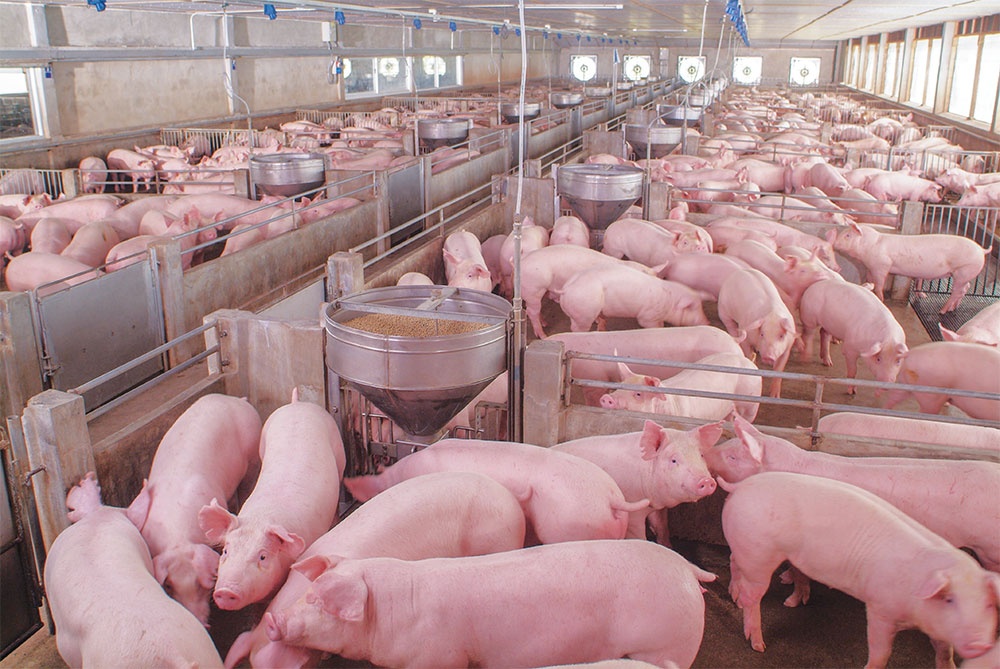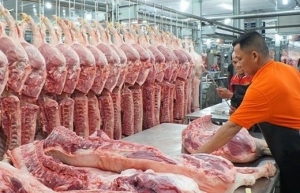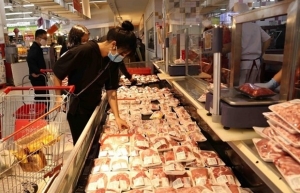Exporting activities take up priority for pork businesses
 |
| Major groups are investing in waste control technology and non-polluting livestock methods, Photo: Shutterstock |
The price of domestic live hogs has fallen for consecutive months due to abundant supply and decreased demand. At present, they sold across the country at an average $2.15 per kg.
Tong Xuan Chinh, deputy head of the Animal Husbandry Department under the Ministry of Agriculture and Rural Development (MARD) said, “It is a similar situation in China, Thailand, and the Philippines, where the price is at an average of $2.10 per kg. The major reason is due to abundant supply, while the purchasing power has dropped.”
Chinh said that live pig production in livestock enterprises was increasing rapidly. In the first quarter, the scale of pig herds increased by 6.2 per cent on-year and the weight of live pigs was 1.19 million tonnes, up 7.5 per cent. Meanwhile, last year, the total herd was over 31 million live hogs, an increase of 11 per cent compared to the same period in 2021.
Meanwhile, demand is falling sharply because many enterprises and factories have reduced their pork consumption by 20-30 per cent. Some factories have even had to suspend operations due to a lack of orders.
According to a market research report by Ipsos Company published in June 2022, each Vietnamese person consumed an average of 31.4kg of pork in 2018, but as of mid-2022, this has decreased to 23.5kg.
To deal with the supply-demand issue, Chinh said that it was necessary to diversify the consumption market, including the expansion of export markets.
Vietnam has been exporting suckling pigs to Hong Kong, Malaysia, and some other markets. Meanwhile, Australian-backed Mavin Group became the first business in Vietnam to officially export fresh pork to a foreign market when the first batch was shipped to Myanmar in 2018, a success of not only the company but also the country’s animal farming sector. So far, such exports remain on the rise.
According to David John Whitehead, chairman of Mavin Group, this company has built a circular model in pig farming activities in the provinces of Gia Lai, Nghe An, and Dong Thap.
The Mavin Group model focuses on both sows and pigs for meat and adopts high technology. Water management, waste control, and the use of technologies that do not harm the environment, such as solar power or biogas technologies, are all key to production.
At the same time, Mavin Group also has a factory to collect all kinds of waste and waste products of livestock activities to produce fertiliser.
“We have built a closed disease control system and procedures. Mavin’s goal is to develop a low-carbon and non-polluting livestock industry. It is expected that by 2025, Mavin Group will supply the market with one million clean pigs per year.”
The fostering the export of livestock products is also a long-term strategy of the MARD. The ministry’s plan of livestock development strategy 2021-2030, sets the target that by 2025, the total output of live meat of all kinds will about 5.5 million tonnes. This is expected to increase to 6-6.5 million tonnes. By 2030, Vietnam targets to export between 15-20 per cent of its pigs, equalling 600,000 tonnes per year.
How to foster the export of pigs and pork products is also one of the government’s key focuses on the sector. In late 2022, Deputy Prime Minister Le Van Thanh assigned the MARD to coordinate with the Ministry of Industry and Trade and relevant agencies in removing barriers to pork exports. He also requested the MARD to devise solutions to develop the livestock industry sustainably, meeting demand.
Nguyen Tri Cong, chairman of the Dong Nai Livestock Association, told VIR that Vietnam does not limit the quota of pig and pork product exports. In addition, the requirements of free trade deals with import markets must be met.
“Pork exporters are currently facing difficulties with trade barriers, such as meat quality, ensuring traceability, from other countries. In particular, each destination that imports pork from Vietnam, such as Myanmar, Indonesia, or African nations, has their own regulations. Besides that, the major barrier is the competition in pricing, which depends on the cost of feed,” Cong said.
To be proactive in material for feed to avoid dependence on imports, which account for 70 per cent of feed production costs, the MARD is working with large livestock companies such as C.P. Vietnam and De Heus to expand the feed crop growing area, including for maize and soybean.
 | Government orders immediate measures to stabilise pork prices In light of the rising price of pork and feed ingredients in recent times, Deputy Prime Minister Le Minh Khai has asked relevant authorised agencies to take immediate measures to ensure supply and demand and stabilise prices. |
 | Market attempts to stabilise pork prices A rise in pork has benefited some husbandry companies in Vietnam, with the government ordering stabilising measures to help rein in inflation at around 4 per cent this year. |
 | Confusing aspects of pork prices must be dealt with While the price of live hogs on the market has dropped over the last couple of months, the cost of pork in supermarkets is falling too slowly, affecting the country’s goal of stabilising prices and also curbing inflation. |
What the stars mean:
★ Poor ★ ★ Promising ★★★ Good ★★★★ Very good ★★★★★ Exceptional
Related Contents
Latest News
More News
- Year-end shopping season faces rising uncertainty (January 14, 2026 | 18:11)
- State sector sees broad-based profit surge as major groups deliver strong results (January 13, 2026 | 17:34)
- HSBC forecasts Vietnam's GDP growth to hit 6.7 per cent in 2026 (January 13, 2026 | 17:33)
- Japfa maintains position in top 10 animal feed firms (January 13, 2026 | 10:18)
- Roadmap shaping up to phase out gas bikes (January 13, 2026 | 10:07)
- FDI momentum accelerates transformation of Vietnam’s plastics sector (January 11, 2026 | 07:00)
- UOB lifts Vietnam growth outlook to 7.5 per cent for 2026 (January 10, 2026 | 09:00)
- Exports cement role as central pillar (January 09, 2026 | 12:37)
- Siemens and NVIDIA expand partnership to build industrial AI operating system (January 09, 2026 | 10:04)
- High targets, hard choices: companies weigh risks in 2026 (January 08, 2026 | 16:58)

 Tag:
Tag:




















 Mobile Version
Mobile Version